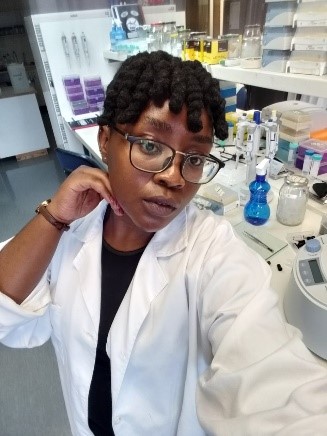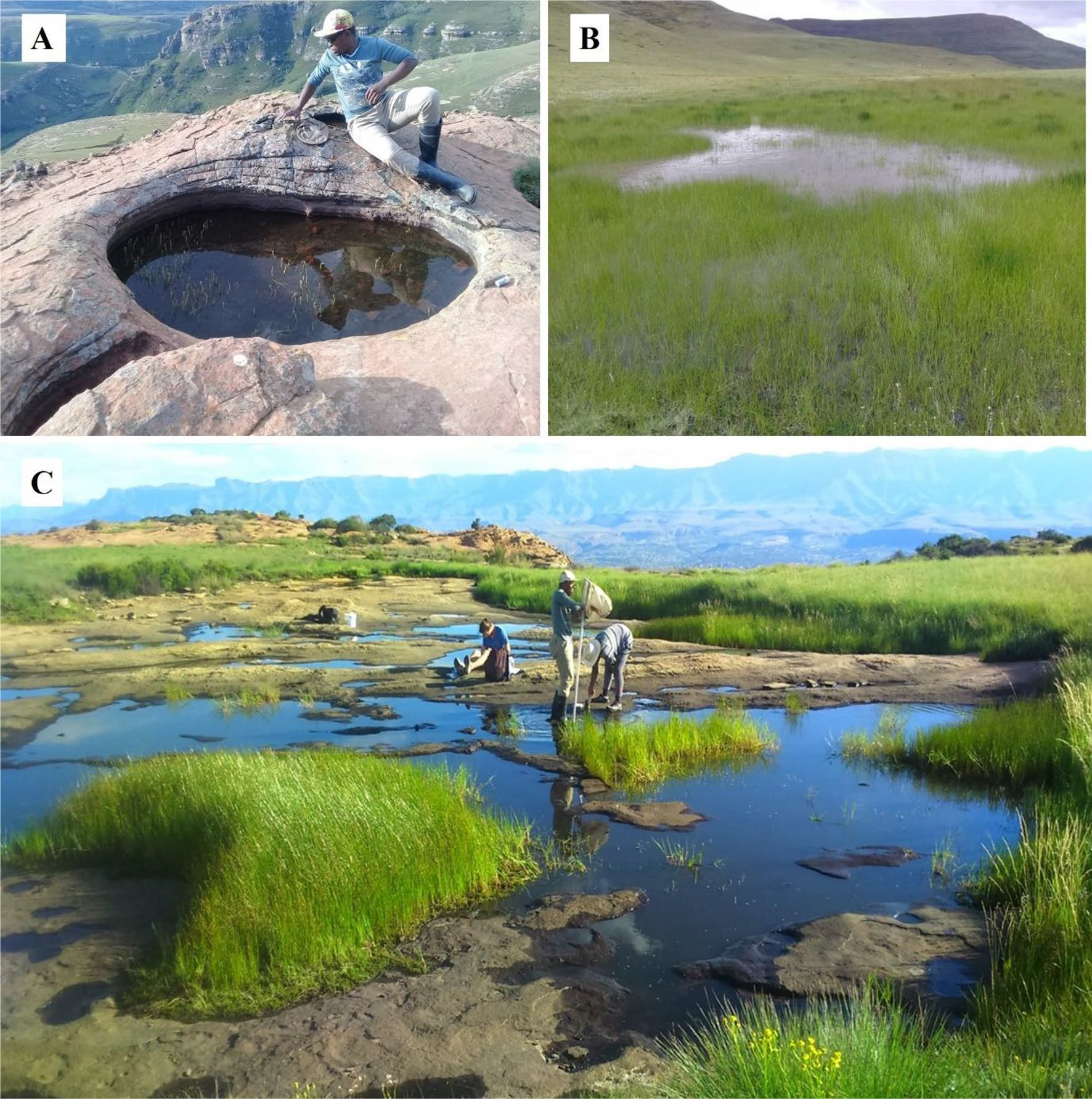Albany Museum


Left: Rockpools; right: Tarns
The recently published paper titled “Trophic interactions and food web structure of aquatic macroinvertebrate communities in Afromontane wetlands: the influence of hydroperiod” is based on my BSc honours project. Here is the link to the paper https://link.springer.com/article/10.1007/s00027-021-00792-w.
I did my honours in 2018 at Rhodes University and the project was supervised by Sam Motitsoe and Musa Mlambo. The project was based on assessing the influence of hydroperiod on community structure and food webs in temporary pools in Maloti-Drakensberg mountain located in Free State Province. In simple terms, hydroperiod is the length of time that the area is wet or has water. There are two types of temporary pools found in Maloti-Drakensberg mountain, i.e., rockpools and tarns. Rockpools are shallow pools formed on rocks and tarns are relatively deeper and larger in size. As such, rockpools generally exhibit shorter hydroperiod while tarns exhibit longer hydroperiod.
Based on this knowledge, we hypothesized that tarns would have higher biotic diversity and complex food web structure as compared to rockpools. Our findings agreed with our hypothesis, that is, tarns had longer hydroperiod, high species richness and diversity than rockpools, therefore resulting in the complex food web structure.
The motive behind this research project was that the last study conducted in the area (Maloti-Drakensberg mountain) was in 1998 by Michelle Hamer and K. Martens and they looked at Branchiopods. Also, most studies conducted on temporary pools looked at species richness and biodiversity and very little is done on food web structure. We thought our project would fit best for filling in this gap.
Currently, I am a second-year MSc Zoology student at Rhodes University. My research project is supervised by Musa Mlambo from Albany Museum. The project focuses on assessing the effectiveness of eDNA as a monitoring tool for alien invasive species in freshwater systems.
I would like to thank Dr Helen James, head of Freshwater Invertebrates Department at Albany Museum for allowing me to use every facility I need at the department for my research. Also, I would like to thank NSCF. I am also grateful to Musa Mlambo and Sam Motitsoe for the academic support, mentorship and assistance in the field.



Left: Currently, eDNA lab work at SAIAB Molecular Lab; middle: Caught redswamp crayfish specimen, Procambarus clarkii in Mpumalanga; right: Data collection in Ndumo Game Reserve, KwaZulu Natal

Data collection in Qwaqwa mountain rockpools (Maloti-Drakesnberg mountain), Free State.
